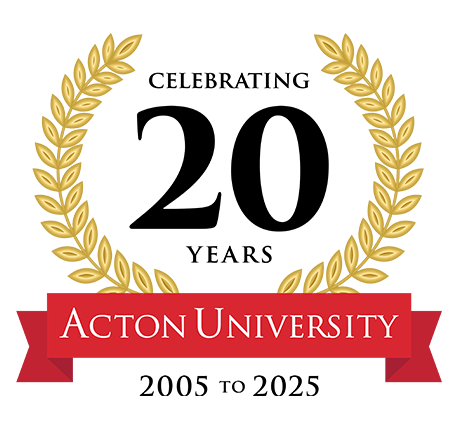Ever see one of those used car ads that says, “Bad credit? Drive today!” The implication being that the dealer will happily arrange a loan regardless of the borrower’s credit history. For years now, the federal government has been running a similar scheme: “Poor student? Go to college anyway!” While this campaign has had better intentions behind it, it is no less of a problem. In the field of higher education, the federal government has usurped the roles of families, private organizations, and markets, with negative moral and economic consequences.
As students across the country begin a new school year, the Obama administration has put forward a plan for student aid reform. In the president's defense, he did not create the problem in question. The Higher Education Act began in 1965 as part of President Lyndon Johnson's “Great Society.” At the time, it was a need-based program for the poor that centered mainly around Pell grants rather than loans. As time went on, Congress kept expanding the program, including the middle class, poor performing students who needed remedial courses, as well as students attending trade schools. At the same time, while many students in the 1970s received federal aid in the form of grants, by the 1980s and 1990s the form of aid had shifted primarily to loans.
The expansion of federally backed loans has altered the typical way the loan market works. When issuing a purely private loan, banks mitigate risk by setting an interest rate relative to the potential borrower's credit and income, as well as any other relevant factors. And if a person has bad credit or little prospect of being able to pay off the loan, the loan is denied in the first place.
With federal loans, however, the risk is mitigated by guaranteeing the loan with U.S. tax dollars and keeping interest rates artificially low. Thus, people who otherwise would be turned away and have to work on their savings and credit for a few years before starting college now can (and do) go straight from high school to college, often regardless of academic ability or financial health. At the same time, as the Obama plan itself admits, “The average tuition at a public four-year college has increased by more than 250 percent over the past three decades, while incomes for typical families grew by only 16 percent.”
Why might this be? When loans are guaranteed by the state and detached from market forces and personal responsibility, those institutions being paid with that loan money experience inflated demand as everyone and anyone now can go and (wants to go) to college. As a result, tuition prices have been inflated. Indeed, the major shift has been “over the past three decades” as federal aid shifted from primarily limited, need-based grants to nearly indiscriminate loans. Ye as the plan notes, “Loan default rates are rising, and too many young adults are burdened with debt as they seek to start a family, buy a home, launch a business, or save for retirement.” In addition, today student debt collectively amounts to more than $1 trillion in a “higher-ed bubble” akin to the housing bubble that caused the 2008 crash. Whether or not the student loan bubble could cause another financial crisis is a matter of debate right now.
So, what is the president's solution to this problem? The plan is divided into the following three headings: “Paying for Performance,” “Promoting Innovation and Competition,” and “Ensuring that Student Debt Remains Affordable.”
Most of these are well-intentioned goals. It is clear, in addition, that the Obama administration is sensitive to some of the inherent problems with federal loans: For example, the “Paying for Performance” section introduces greater accountability for students and institutions of higher education. While more data and transparency are not a bad thing, the plan's standard of outcomes for institutions is questionable: “graduation and transfer rates, graduate earnings, and advanced degrees of college graduates.” Tying money to graduation rates is just as much an incentive for grade inflation as it is for improving quality, potentially skewing individual student performance as well. And graduate earnings depend upon a whole host of variables that certainly cannot be reduced to what school a person graduated from.
The issues do not end there. When the plan says it will “encourage innovation by stripping away unnecessary regulations,” it later spells out what that really means: more online education, more MOOCs (Massive Open Online Courses), expanding aid to include competency-based education, and so on. Much of this is laudable, but the problem is that the list is selective. The federal government will deign to issue “deregulatory waivers” for any innovation it thinks worthwhile. But why not just deregulate in general and leave innovation to institutions' discretion?
Indeed, the whole plan, though admirably attempting to address our student debt problem, is symptomatic of the problem itself: an overreach of federal authority in violation of subsidiarity. As Pope Pius XI wrote in his 1931 encyclical Quadragesimo Anno, “The supreme authority of the State ought ... to let subordinate groups handle matters and concerns of lesser importance, which would otherwise dissipate its efforts greatly.” Our student debt problem was caused by expansion of federal reach into the student loan market. Is it too scandalous to suggest that it might be better solved by scaling back federal involvement?
In this regard the Obama plan is thankfully not entirely silent, even if it is only mentioned as an afterthought: “Finally, the president will challenge leaders in states, philanthropy, and the private sector to make their own commitments to improve college value while reducing costs.” For too long now, federal policy has been to start from the top and continually increase federal reach, and the results have led us into our current debacle. It would be better if instead of “finally,” the president prioritized a more subsidiary approach.
On the other hand, scaling back federal involvement for the sake of subsidiarity would require local communities, churches, business leaders, and others to play a larger role. Whether it be by helping young adults get jobs so they can save for their educations, subsidizing tuition through philanthropy, or tutoring struggling students to learn better study habits, the greatest effect of reducing federal loans would not be financial but moral. It would create a greater need for people to find tangible ways to love their neighbors themselves instead of simply relegating that duty to the federal government. But isn't that a cost those who advocate for higher education ought to be willing to pay?













